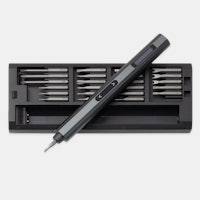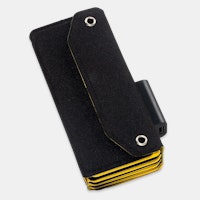Click to view our Accessibility Statement or contact us with accessibility-related questions




Tim's Top Ten Tips for Team Trios - Massdrop East/West: Article #22

search
close
Sort by: Newest
keyboard_arrow_downmaxxgs
0
Jun 23, 2017
Sweet article. Curious how you ended up building the sample pool provided. I figured (1) RW aggro (2) GB Trial+Cartouches (3) UB Control/skies.
PRODUCTS YOU MAY LIKE
Trending Posts in More Community Picks

Graham88
Completely surprised by the lack of blade diversity here on Drop...
I’ve been a collector of Blades since before my teens, and a retailer coming up on 15… or maybe 20 years. Drop has really been kind of an interesting experience for me, because I do occasionally get to see some unusual tech and sometimes EDC items that otherwise I might not have been aware of. And maybe it’s because I have a deep love of cutlery and bladed weapons, but I find myself trolling through the site looking at it what’s available; and it’s just it’s pretty much the same. And the bladed community here is just always confused me.. every single knife is about the same, they’re almost all drop points and although the handle materials change and brands change.. it’s really just the same knife over and over and over again... occasionally you’ll see a tanto or a slight variant; but rarely… and almost never a serrated blade. And I’m just deeply amazed at this diversion of serrated blades. And I’m just surprised there isn’t more of a request for diversity here.... and I...
Mar 12, 2020
JellyDPhoto
Can we get Sony E-Mount or other mirrorless camera options please..
Would be nice to see some Sony E mount full frame cameras on here. I currently shoot with a A99 and they killed the lense path for better or more option lenses and now is all E-Mount. 🤔
Jan 13, 2020
RayF
There Are Pandas, and Then There Are Pandas.
And this isn't either of them! The Pandas we're talking about here, are watches, not bears. And what got me thinking about them (again) was a link posted this morning by @cm.rook who pointed a few of us to the very attractive (and not terribly priced) Yema "Rallygraph" Panda which, in it's most traditional arrangement, looks like the one on the left, but can also be had in the version on the right: The model on the left is a true Panda, while the model on the right is called a reverse Panda. The reason for that distinction is clear--Panda bears, only come in the first arrangement. Now at this point, everyone should be thinking about the most well-know Panda, The Rolex Panda, which is actually a Daytona, and among Rolex Daytonas, the most famous of which is the Paul Newman Daytona, which was famous first, because it was Paul's, and second because it sold at auction for $17.8 million (US Dollars). The story of that auction is well-known so I'll only...
Nov 8, 2019







Tip 1 – Choose the right team
This might be the most important decision you make for any team endeavor. It is important to understand your own weaknesses, and find teammates who best augment them. A team comprised of three control specialists will most likely lose some percentage points with whoever is assigned the aggressive deck(s). Team chemistry is also something to consider. Your teammates are the people you will be leaning on and trusting for advice, who you will be critiquing and who will be critiquing you, who you will be celebrating victories with and commiserating with in defeat. Make sure you and your teammates all have a good understanding and acceptance of how each one handles high stress situations, mistakes where blame could be assigned, and loss in general. Confidence and morale play a big part in individual performance, so it’s good practice to find teammates who can keep these high throughout the weekend, even when things aren’t going well.
Tip 2 – Choose the right seats
In the past, there was a belief that putting the aggressive decks on the wings and the control deck in the middle was correct, but these days the prevailing thought is that it doesn’t matter. My only piece of advice here would be to put the player who is best at quickly evaluating a game state in the middle since he or she will most likely be the one asked for advice. If you have a player who wants to play their own game and doesn’t like to solicit or give advice, do NOT put this player in the middle. This all seems very obvious, but if you are on a newly formed team it is important to know how each other react to in-game questions, which can be disruptive if the person being asked is in a complicated game. If you don’t know their style or preferences, just ask! It’s much better to learn these attributes and quirks before you sit down, instead of finding out during round 1 of the GP that your B seat doesn’t like taking or giving advice while your A and C seat tend to be collaborative.
Tip 3 – Practice the team sealed format
This is probably a no brainer, but each time I sit down with a new set for team sealed I’m amazed at how different it is from the draft and individual sealed limited formats for the same set. Because you are opening twelve packs (meaning more card selection and more rares) and you have three decks to play all of your best cards, team sealed decks are almost always going to be better than the best draft decks in both power level and synergy. For example, in a typical B/G -1/-1 counters draft deck you normally do not have enough cards to make Nest of Scarabs playable. However in some of the team sealed pools I’ve opened, my team was able to construct B/G decks with upwards of sixteen cards that activate Nest. It’s important to recognize that some niche synergy cards considered unplayable in draft and sealed are often bombs in team sealed decks. In the remaining several tips I will go over some practices that I follow from start to finish with the 50 minutes allotted for deck building.
Tip 4 – Assign each player two colors
Once you open the packs and sort by five colors, artifacts, multicolor, and land, then assign each player 2 colors to review for evaluation purposes (with the third player given one color and the artifacts/gold cards). At this point it might be a good idea for the team to take a glance and make note of any powerful multicolor and split-color aftermath cards so you can see what payoffs each pairing might have.
Tip 5 – Individually sort and analyze
Within their assigned colors, each player should cut unplayables and sort creatures and spells by converted mana cost. In this step players should be looking at strengths and weaknesses in the creatures and spells within their colors. Also take note of holes in the mana curve that need to be shored up – most importantly in the two drop creature slot. Identify any cards that could be part of powerful synergies (Trials/Cartouches) and archetype specific cards (Zombies, exert “helpers” like Vizier of Tumbling Sands or Spidery Grasp).
Tip 6 – Put it all together and present
Although this might get bit cramped depending on the table space, the next thing I suggest is putting it all together. Organize all of the playable cards each player sorted and analyzed into one, giant card grid by color and converted mana cost (I usually lump the one drop and two drop creatures together). I like to sort only the creatures by cost and set aside the spells. It is helpful to sort the spells into tiers based on power level. Here is an example with an Amonkhet pool:
Once all the colors are sorted, each person takes turns presenting their colors, pointing out the bombs, removal, synergy cards, and overall feel. Their teammates should be listening, looking, and offering thoughts as well. Repeat until all colors are done. Everyone should take note of what colors could pair well together and powerful synergies between colors. Also keep in mind a few monocolor cards are particularly powerful in certain color combinations - for example if you have multiple Warfire Javelineers, you should probably give U/R a look.
Tip 7 – Trust, but Verify! (the unplayables)
At this point, everyone should take a look at the “unplayables” pile. This is often where the niche archetype and synergy payoff cards go to die, so make sure that everyone reviews the cards relegated to the unplayable pile. Remember, one deck’s trash could be another deck’s treasure.
Tip 8 – Identify your decks, assign, and build
Once you and your teammates have presented your colors, you can begin the process of the identifying the color pairs and archetypes that your pool best facilitates. Assign each person one of the decks to build. This is where it is important to have a diverse skill set in terms of deck plan, aggression, and archetype knowledge among your teammates. Spend time crafting the decks until either you think the combination is not good enough or you think you have the decks to a reasonable place. If needed, rotate around to get fresh eyes on each of the decks. My general rule is the person playing the deck should have final say on their 40 card maindeck. If my teammate and I disagree on the final few cards, after I give my arguments I will trust that they are making their choices based on their playstyle and experiences.
Tip 9 – Don’t forget the sideboard
With roughly fifteen minutes left in deck construction, it is ideal to have all three maindecks finalized so the team can start considering how to divvy up the sideboard cards and how the sideboard cards might give the decks new angles postboard or shore up weaknesses. For two decks that share a common color, sideboard allocation will require some collaboration and cross analysis. To the extent possible you want to ensure that each deck has a sideboard plan for its worst matchups, and each deck has a way to deal with problem enchantments and artifacts. Also remember that if you have a deck with color fixing, you should consider off color sideboard options for that deck.
Tip 10 – Audit each other
The entire team sealed process can be very hectic. Dealing with three personalities and 168 cards in 50 minutes can be stressful, and oftentimes deck registration comes down to the wire. Mistakes happen in stressful situations so I would strongly suggest that if time permits, each player verifies another’s deck registration sheet. With twelve packs-worth of cards lying around and large sideboards, it is easy to make a registration mistake. If you get deck checked, I can’t think of a more demoralizing defeat than a clerical defeat.
Although I’ve participated in several Amonkhet team sealed practice builds, I still find myself a bit befuddled with the format. In most of the pools there is usually one obvious deck (usually R/W aggro, B/W Zombies, or U/B cycling – though the cycling deck being “obvious” may be a product of the rare payoffs in the small sample size of pools that I’ve opened). Similarly to the draft format, I’ve found that the best performing decks tend to be extremely aggressive. I’ve had what I thought were extremely good and versatile midrange decks that appeared to be streamlined with all the tools, but ended up very clunky against the aggressive decks. It may be that the best strategy for this format is to open two great and fast aggressive decks and a linear synergy deck like Zombies, -1/-1 counters, or cycling!
Just remember that the most important things in team events are to work productively together, grow relationships, and have fun. With the vast majority of the Magic year focused on individual performance and achievement, it’s refreshing to have the opportunity to work and play in a team environment from time to time. I hope you can take some of these tips and apply them to your next team event!
Thanks for reading, and please post any questions or feedback below!
We had an exciting reveal of two Amonkhet masterpieces , check out the video here: https://www.massdrop.com/talk/1482/scouting-report-massdrop-east-west-on-2-amonkhet-masterpieces
If you are curious about our team, check out our intro: https://www.massdrop.com/talk/1117/announcing-team-massdrop-east-west or, read our previous weekly articles:
1. How to Prepare for an MtG Pro Tour by Ben Weitz (https://www.massdrop.com/talk/1158/how-to-prepare-for-an-mt-g-pro-tour)
2. Approaching New Magic Drafts by Ari Lax (https://www.massdrop.com/talk/1193/approaching-new-magic-drafts)
3. Constructed Testing for Pro Tour Aether Revolt by Jarvis Yu (https://www.massdrop.com/talk/1213/recap-of-constructed-testing-for-massdrop-east-west-for-pro-tour-aether-revolt)
4. Breaking into Eternal Formats - Case Study: GP Louisville by Jon Stern (https://www.massdrop.com/talk/1240/breaking-into-eternal-formats-case-study-gp-louisville-massdrop-east-west-article-4)
5. In Good Company - Top 8 at GP Vancouver by Eric Severson (https://www.massdrop.com/talk/1285/in-good-company-top-8-at-gp-vancouver)
6. Adapting to Full Block Kaladesh Limited by Jiachen Tao (https://www.massdrop.com/talk/1323/adapting-to-full-block-kaladesh-limited-massdrop-east-west-article-6)
7. Sorry My Felidar Guardian Ate My Homework by Mark Jacobson (https://www.massdrop.com/talk/1364/sorry-my-felidar-guardian-ate-my-homework-massdrop-east-west-article-7)
8. Taking a Mardu Vacation - Top 8 in New Jersey and Heading to an Eternal Extravaganza by Jarvis Yu (https://www.massdrop.com/talk/1401/taking-a-mardu-vacation-top-8-in-new-jersey-and-heading-to-an-eternal-extravaganza-massdrop-east-wes)
9. A Guide to the Grind by Pascal Maynard (https://www.massdrop.com/talk/1448/a-guide-to-the-grind-massdrop-east-west-article-9)
10. Asking Aggro-vating Questions by Timothy Wu (https://www.massdrop.com/talk/1493/asking-aggro-vating-questions-massdrop-east-west-article-10)
11. The Meat and Potatoes of Jund by Paul Dean (https://www.massdrop.com/talk/1534/the-meat-and-potatoes-of-jund)
12. Hidden Values in Magic: The Gathering for Kids and Parents by Scott Lipp (https://www.massdrop.com/talk/1572/hidden-values-in-magic-the-gathering-for-kids-and-parents-massdrop-east-west-article-12)
13. The Importance of Preparation in Competitive Magic: The Gathering by Ricky Chin (https://www.massdrop.com/talk/1606/the-importance-of-preparation-in-competitive-magic-the-gathering-massdrop-east-west-article-13)
14. How to Find Amonkhet's Star Players by Ari Lax (https://www.massdrop.com/talk/1643/how-to-find-amonkhets-star-players-massdrop-east-west-article-14)
15. Top is No Longer on Top by Jarvis Yu (https://www.massdrop.com/talk/1692/top-is-no-longer-on-top-massdrop-east-west-article-15)
16. Casual Multiplayer Fun by JC Tao (https://www.massdrop.com/talk/1731/casual-multiplayer-fun-bang-magic)
17. Monoblack Zombies at Pro Tour Amonkhet by Eric Severson (https://www.massdrop.com/talk/1764/monoblack-zombies-at-pro-tour-amonkhet)
18. To Puzzle or to Puzzleknot by Paul Dean (https://www.massdrop.com/talk/1793/to-puzzle-or-to-puzzleknot)
19. The Evolution of Vehicle Aggro Decks by Ricky Chin (https://www.massdrop.com/talk/1822/the-evolution-of-vehicle-aggro-decks-massdrop-east-west-article-19)
20. Putting down My beloved Bant Eldrazi by Ben Weitz (https://www.massdrop.com/talk/1863/putting-down-my-beloved-bant-eldrazi-massdrop-east-west-article-20)
21. Breaching into Grand Prix: Las Vegas by Scott Lipp (https://www.massdrop.com/talk/1895/breaching-into-grand-prix)